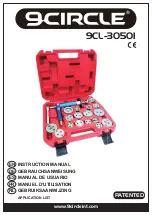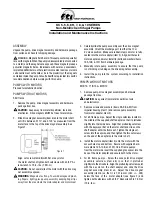
OPERATION
Operational guidelines
Straight Line bevel Shaping
To shape a beveled straight edge, use a bevel-edge shaping jig in combination
with the regular fence as shown in Fig.31.
To perform a bevel-edge cut, the infeed edge of the jig is placed against the
infeed fence and clamped to the table as shown in Fig.32. The outfeed fence is
moved forward as necessary to compensate for the cut.
Caution:
Never attempt to bevel cut free hand. Always use a bevel-edge fixture.
Contour Edge Shaping With Collar
To shape contoured edges, the operator must first remove the fence assembly.
In order to control the workpiece and limit the depth-of-cut, the operator must
use an anti-friction collar with the cutter as shown in Fig.33.
The collar may be positioned above or below the cutter, and its function is to ride
against the workpiece or template. At the same time, the collar will establish the
depth-of-cut as shown in Fig.34. Whenever possible, always use a ring guard or
safety collar.
Note:
Since the collar requires at least 1/8" of surface edge to ride against, the
entire edge cannot be shaped as shown in Fig.35. The added use of a pattern,
however, permits the shaping of the entire contour edge.
FIGURE 31
FIGURE 32
FIGURE 33
FIGURE 34
FIGURE 35





































